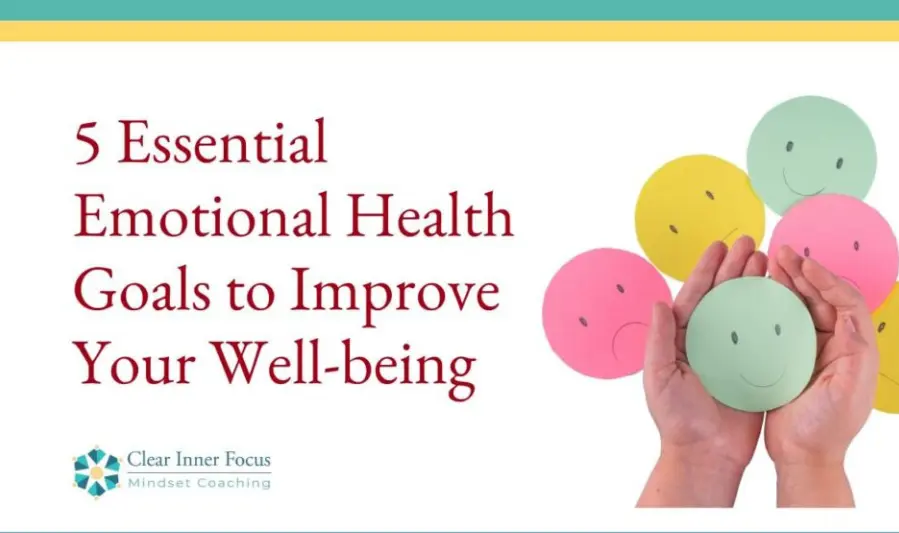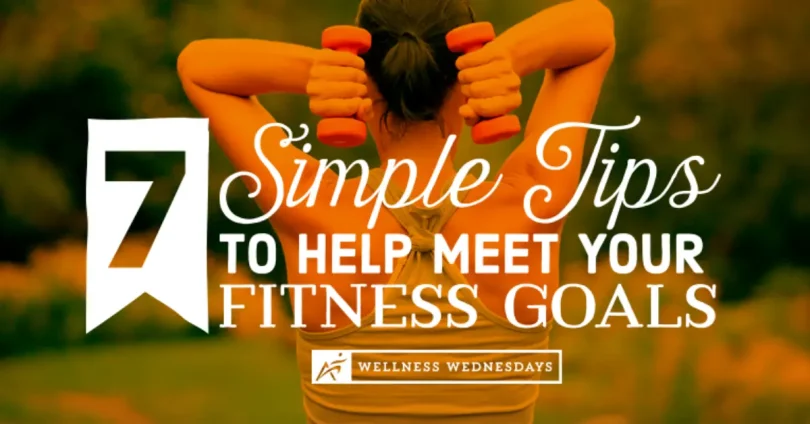Introduction to Beginner Wellness
What Wellness Means
Wellness is the balance of your physical, mental, and emotional health. It’s not just about exercising or eating healthy—it’s about making small daily choices that help you feel better, think clearly, and live a happier life. Wellness focuses on improving your lifestyle in a way that supports long-term health, energy, and inner peace.
Why Beginners Should Start With Small Goals
For beginners, starting big can feel overwhelming and lead to burnout. Small goals are easier to achieve, keep you motivated, and build confidence over time. Simple habits like drinking more water, walking 10 minutes a day, or sleeping on time create a strong foundation. When you succeed in small steps, it becomes easier to stay consistent and gradually level up.
Importance of Building Healthy Habits Slowly
Real wellness comes from slow, steady habits—not quick fixes. When you introduce new routines gradually, your mind and body adjust better, and these habits become a natural part of your lifestyle. Whether it’s improving your diet, exercising regularly, or practicing mindfulness, slow progress helps you stay committed and avoid stress or frustration.
Understanding Wellness Goals

Definition of Wellness Goals
Wellness goals are small, intentional steps you set to improve different areas of your overall health. These goals guide you toward better physical strength, mental clarity, emotional balance, and positive social connections. They act as a roadmap, helping you stay focused and consistent on your wellness journey.
Types of Wellness Goals
- Physical Wellness Goals
These focus on improving your body’s health. Examples include exercising regularly, eating nutritious food, staying hydrated, and getting enough sleep. - Mental Wellness Goals
These support your mind and thinking patterns. They may include reducing screen time, learning new skills, practicing mindfulness, or managing stress better. - Emotional Wellness Goals
Emotional goals help you understand and handle your feelings. This includes journaling, calming breathing exercises, or setting boundaries to protect your peace. - Social Wellness Goals
These improve your relationships and interactions with others. Examples include spending quality time with loved ones, improving communication, or joining positive social groups.
How Easy Goals Help Build Long-Term Discipline
Starting with easy, manageable goals creates a strong base for long-term success. Small wins boost confidence, reduce pressure, and help you stay consistent. When your brain sees progress—even small progress—it becomes motivated to continue. Over time, simple habits turn into disciplined routines, allowing you to take on bigger wellness challenges without stress or burnout.
Benefits of Easy Wellness Goals

Improved Energy Levels
Starting with simple wellness habits—like drinking more water, taking short walks, or getting enough sleep—helps boost your daily energy. These small actions support your body’s natural rhythm, making you feel more active and refreshed throughout the day.
Better Mental Clarity and Reduced Stress
Easy wellness goals such as deep breathing, short breaks, or mindfulness exercises calm the mind and improve focus. When stress is reduced, your thinking becomes clearer, decisions become easier, and your overall mental well-being improves.
Stronger Immunity and Physical Health
Healthy routines like light exercise, balanced eating, or staying hydrated gradually strengthen your immune system. Consistency in these simple habits helps your body fight off illnesses, improves digestion, and supports long-term physical health.
Boost in Confidence and Self-Growth
Achieving small goals builds self-trust. Every successful step—even a tiny one—boosts confidence and motivates you to continue. Over time, these small wins lead to personal growth, stronger discipline, and a positive mindset toward bigger wellness challenges.
Simple Wellness Goals for Beginners
4.1 Daily Hydration Goals
Start by drinking 6–8 glasses of water daily. Staying hydrated improves energy, supports digestion, and keeps your skin healthy. You can set small goals like drinking one glass of water every morning or keeping a water bottle with you throughout the day.
4.2 Light Physical Activity
Begin with simple exercises such as a 10–15 minute walk, stretching, or basic home workouts. Light physical activity boosts mood, increases flexibility, and helps build the foundation for a long-term fitness routine without overwhelming your body.
4.3 Healthy Eating Swaps
Replace sugary snacks with fruits, refined carbs with whole grains, and fizzy drinks with fresh juices or water. Small swaps help you maintain a healthier diet without needing a strict meal plan, making it easier to stay consistent.
4.4 Better Sleep Routine
Aim for 7–8 hours of sleep every night. Set a fixed bedtime, reduce screen time before bed, and create a relaxing sleep environment. Good-quality sleep improves memory, reduces stress, and supports overall wellness.
4.5 Daily Mindfulness Practice
Spend at least 5 minutes daily doing deep breathing, meditation, or quiet reflection. Mindfulness helps reduce anxiety, improves focus, and keeps your emotions balanced throughout the day.
4.6 Digital Detox Habits
Limit unnecessary screen time by taking short breaks from your phone, turning off notifications, or setting no-device times. Digital detoxing helps reduce mental fatigue and improves productivity.
4.7 Building Social Connections
Make an effort to talk to family or friends, join a community group, or simply check in with someone you care about. Positive social interactions boost emotional well-being and help reduce feelings of loneliness or stress.
4.8 Basic Self-Care Activities
Include simple self-care habits such as skincare, grooming, reading, journaling, or taking relaxing showers. These activities help you feel refreshed, confident, and more grounded in your daily routine.
How to Set Achievable Wellness Goals
SMART Goal-Setting Method
Using the SMART method helps you create goals that are realistic and easy to follow:
- Specific: Clearly define what you want to achieve (e.g., drink 7 glasses of water).
- Measurable: Track your progress through numbers or checklists.
- Achievable: Choose goals that match your current lifestyle and abilities.
- Relevant: Focus on goals that support your overall wellness.
- Time-bound: Set a timeline, like daily, weekly, or monthly.
This method keeps you organized, motivated, and focused.
Starting with One Habit at a Time
Instead of trying to change everything at once, begin with just one simple habit—like walking for 10 minutes or drinking more water. Once it becomes natural, you can add another. This prevents overwhelm and increases long-term success.
Gradually Increasing Difficulty
Once a habit feels easy, gently increase the challenge.
Examples:
- Walk 10 minutes → increase to 20 minutes.
- Drink 6 glasses of water → increase to 8.
- Meditate 3 minutes → increase to 5 or 10.
Small progress leads to big results.
Avoiding Burnout
Pushing too hard too fast can lead to stress and quitting. To avoid burnout:
- Take rest days when needed.
- Don’t compare your progress with others.
- Celebrate small wins.
- Keep goals simple and flexible.
Remember: sustainable growth is better than perfection.
Tracking and Maintaining Wellness Goals
Habit Tracking Apps or Journals
Using a habit tracker helps you stay consistent and aware of your daily progress.
You can use:
- Mobile apps like habit trackers, reminders, or wellness apps
- A simple notebook or journal
- A printed checklist or weekly planner
Tracking makes your habits visible, which increases motivation and accountability.
Weekly Reviews
Every week, take a few minutes to check your progress. Ask yourself:
- Did I stay consistent?
- Which habits were easy?
- What felt challenging?
Weekly reviews help you understand what works and what needs improvement.
Adjusting Goals When Needed
Wellness goals should be flexible. If something feels too difficult or not useful, adjust it.
You can:
- Reduce the time required
- Change the habit
- Break it into smaller steps
- Modify it to fit your routine
Adjusting keeps you motivated instead of overwhelmed.
Celebrating Small Wins
Every small achievement deserves recognition.
Celebrate by:
- Treating yourself kindly
- Writing down your progress
- Taking a short break
- Rewarding yourself with something healthy
Small wins build confidence and help you stay committed long-term.
Common Mistakes Beginners Make
Setting Too Many Goals
Many beginners try to change everything at once—diet, exercise, sleep, hydration, and mindset.
This leads to overwhelm and eventually giving up.
Starting with one or two simple goals makes it easier to build long-term habits.
Expecting Fast Results
Wellness takes time.
Beginners often expect quick weight loss, instant energy, or immediate mental calm.
When results are slow, they lose motivation.
Focus on progress, not perfection, and remember that small daily habits give the best long-term results.
Comparing Themselves With Others
Everyone’s journey is different.
Comparing your progress to friends, family, or social media influencers can lead to frustration and self-doubt.
Stay focused on your own goals, your pace, and your personal growth.
you may also like to read these posts:
Discover the Beauty of Indonesian Traditional Fashion Styles
Learn Java Easily Online with Simple Coding Examples
Easy Core Java Tutorials for Beginners to Start Coding
Beginner-Friendly Home Workouts: Simple Routines to Get Started
Lack of Consistency
Doing healthy habits for a few days and then stopping is very common.
Consistency matters more than intensity.
Start small, stay regular, and aim for steady improvement rather than sudden big changes.
Tips to Stay Motivated
Make Goals Enjoyable
Choose habits you actually enjoy instead of forcing yourself into difficult routines.
For example:
- If you dislike running, try walking or dancing.
- If you don’t enjoy strict diets, start with simple healthy swaps.
Enjoyable habits are easier to stick with and feel less like a burden.
Create a Supportive Environment
Your surroundings affect your habits.
To stay motivated:
- Keep healthy snacks visible
- Organize your workout space
- Place your water bottle on your desk
- Keep your journal or planner within reach
A supportive environment makes it easier to follow your wellness routine without extra effort.
Join Wellness Groups or Follow Online Guides
Connecting with others boosts motivation.
You can:
- Join fitness or wellness groups
- Follow social media pages that share tips
- Watch beginner-friendly routines
- Join online communities for accountability
Seeing others progress helps you stay inspired and consistent.
Reward System
Rewarding yourself strengthens habits.
Choose healthy, meaningful rewards such as:
- Buying a new journal or water bottle
- Enjoying a relaxing bath
- Taking a break or doing a fun activity
- Treating yourself to something small
Rewards make you feel appreciated and motivate you to keep going.
Additional Wellness Resources
Recommended Books
These beginner-friendly wellness books offer practical guidance and simple habits you can start right away:
- Atomic Habits by James Clear – for building consistent habits
- The Power of Now by Eckhart Tolle – for mindfulness and emotional balance
- The Sleep Revolution by Arianna Huffington – for improving sleep quality
- The Little Book of Hygge by Meik Wiking – for stress-free, cozy living
- You Can Heal Your Life by Louise Hay – for mental and emotional wellness
Mobile Apps for Wellness
Helpful apps that support daily routines, mindfulness, and healthy habits:
- Habit Tracker Apps: HabitNow, Habitify, Streaks
- Meditation Apps: Calm, Headspace, Insight Timer
- Fitness Apps: Nike Training Club, FitOn, 7-Minute Workout
- Nutrition & Hydration Apps: MyFitnessPal, Water Reminder
Websites and Blogs for Daily Tips
Reliable platforms offering free guidance on fitness, nutrition, and mental health:
- Healthline (wellness & nutrition tips)
- Verywell Mind (mental health advice)
- Mayo Clinic (scientific health information)
- MindBodyGreen (holistic wellness)
- Yoga Journal (yoga routines and mindfulness tips)
Free Online Workouts or Meditation Guides
These sources offer free videos, tutorials, and routines for beginners:
- YouTube Channels:
- Yoga With Adriene (yoga & stretching)
- Pamela Reif (quick workouts)
- MadFit (beginner-friendly exercises)
- Fitness Blender (full-length workouts)
- Meditation & Relaxation:
- Insight Timer (free guided meditations)
- YouTube guided breathing and relaxation playlists
- Home Workouts:
- Blogilates (Pilates routines)
- Grow With Jo (walking and beginner exercises)
Faqs:
What are the easiest wellness goals for beginners?
Beginners can start with simple goals like drinking more water, walking 15 minutes a day, sleeping on time, eating more fruits, and practicing 5 minutes of mindfulness daily.
How long does it take to build a wellness habit?
Most people need around 3 to 4 weeks to form a basic habit, but consistency is more important than speed.
Do I need special equipment to start wellness goals?
No, most easy wellness goals like walking, stretching, journaling, or drinking more water require no equipment at all.
How can I stay motivated to follow my wellness goals?
Start small, track your progress, celebrate small wins, and focus on goals that feel enjoyable rather than stressful.
Can wellness goals improve my mental and physical health together?
Yes, even simple habits like regular movement, healthy eating, and mindfulness can boost energy, reduce stress, improve sleep, and support overall physical and mental well-being.
Conclusion
Starting your wellness journey doesn’t have to be complicated. By focusing on easy wellness goals for beginners—such as staying hydrated, eating balanced meals, moving your body daily, and practicing simple mindfulness—you can build a strong foundation for a healthier and happier life. The key is to start small, stay consistent, and choose habits that naturally fit into your lifestyle. Over time, these small steps create meaningful, long-lasting changes that improve your overall well-being.





